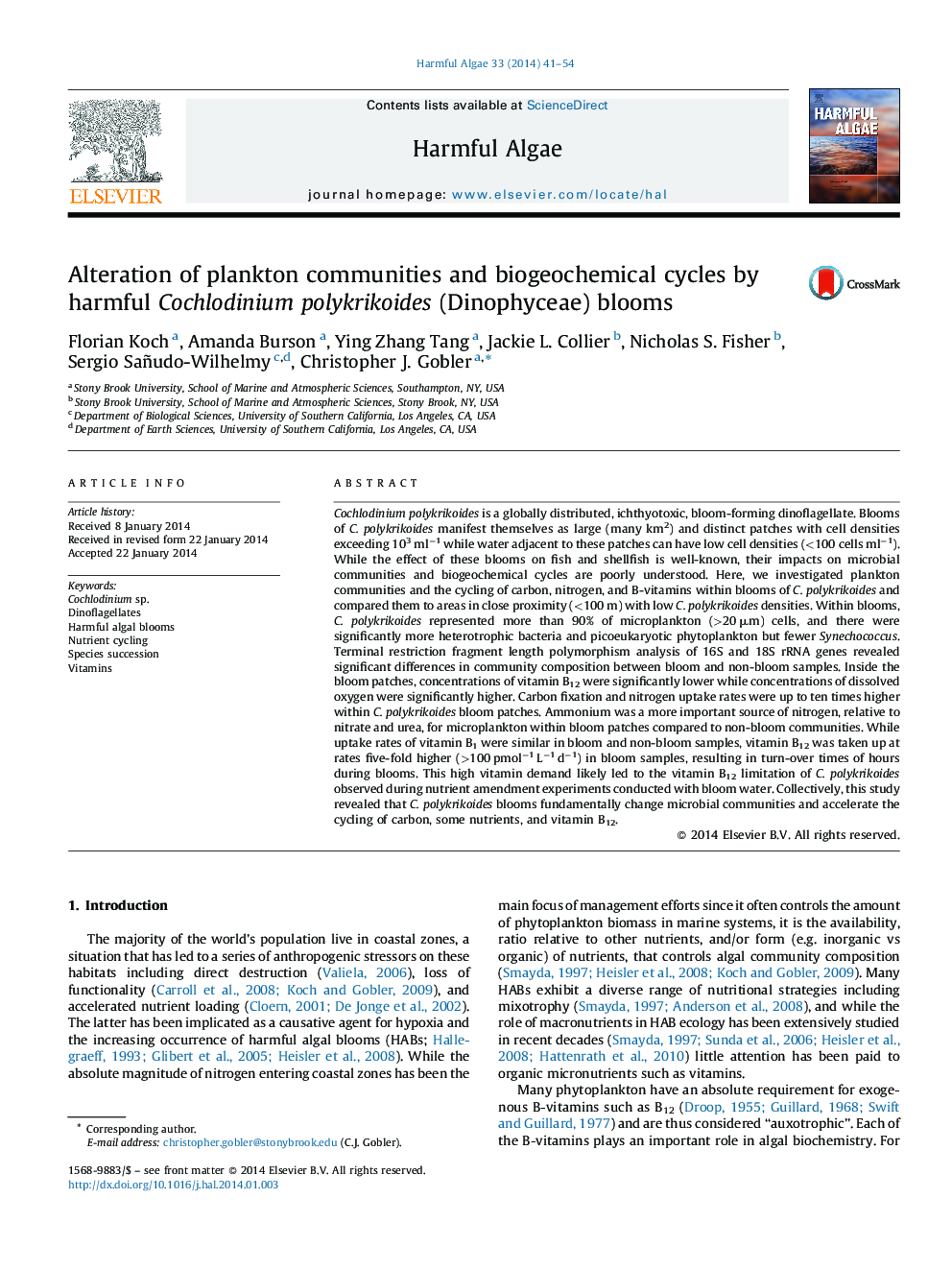| کد مقاله | کد نشریه | سال انتشار | مقاله انگلیسی | نسخه تمام متن |
|---|---|---|---|---|
| 4545302 | 1626938 | 2014 | 14 صفحه PDF | دانلود رایگان |

• Within blooms there were significantly more heterotrophic bacteria and picoeukaryotic algae but fewer Synechococcus.
• Molecular diversity of bacterial and eukaryotic communities differed between bloom and adjacent non-bloom samples.
• Carbon fixation, nitrogen uptake, and vitamin B12 uptake rates were an order of magnitude higher within blooms.
• Cochlodinium blooms dramatically alter microbial communities and accelerate the cycling of carbon, nitrogen, and vitamin B12.
Cochlodinium polykrikoides is a globally distributed, ichthyotoxic, bloom-forming dinoflagellate. Blooms of C. polykrikoides manifest themselves as large (many km2) and distinct patches with cell densities exceeding 103 ml−1 while water adjacent to these patches can have low cell densities (<100 cells ml−1). While the effect of these blooms on fish and shellfish is well-known, their impacts on microbial communities and biogeochemical cycles are poorly understood. Here, we investigated plankton communities and the cycling of carbon, nitrogen, and B-vitamins within blooms of C. polykrikoides and compared them to areas in close proximity (<100 m) with low C. polykrikoides densities. Within blooms, C. polykrikoides represented more than 90% of microplankton (>20 μm) cells, and there were significantly more heterotrophic bacteria and picoeukaryotic phytoplankton but fewer Synechococcus. Terminal restriction fragment length polymorphism analysis of 16S and 18S rRNA genes revealed significant differences in community composition between bloom and non-bloom samples. Inside the bloom patches, concentrations of vitamin B12 were significantly lower while concentrations of dissolved oxygen were significantly higher. Carbon fixation and nitrogen uptake rates were up to ten times higher within C. polykrikoides bloom patches. Ammonium was a more important source of nitrogen, relative to nitrate and urea, for microplankton within bloom patches compared to non-bloom communities. While uptake rates of vitamin B1 were similar in bloom and non-bloom samples, vitamin B12 was taken up at rates five-fold higher (>100 pmol−1 L−1 d−1) in bloom samples, resulting in turn-over times of hours during blooms. This high vitamin demand likely led to the vitamin B12 limitation of C. polykrikoides observed during nutrient amendment experiments conducted with bloom water. Collectively, this study revealed that C. polykrikoides blooms fundamentally change microbial communities and accelerate the cycling of carbon, some nutrients, and vitamin B12.
Journal: Harmful Algae - Volume 33, March 2014, Pages 41–54